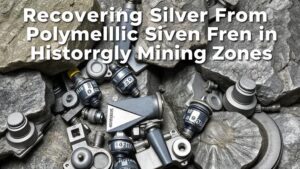Understanding the Relationship Between Gold and Heavy Sands
Understanding the Relationship Between Gold and Heavy Sands
The extraction and processing of gold from heavy sands is a critical area of study in the field of mineral resources. Heavy sands, often found in riverbeds, beaches, or estuarine environments, provide a medium where precious metals like gold can accumulate due to their high density. This article will explore the relationship between gold and heavy sands, examining their geological contexts, the methods of extraction, and implications for the mining industry.
Geological Context of Heavy Sands
Heavy sands are typically formed through a process of sedimentation where denser minerals settle faster than lighter ones. This phenomenon often occurs in ahigh-energy environments, such as river bars and coastal shelves. The minerals that comprise heavy sands include zircon, rutile, ilmenite, and, importantly, gold. Studies have shown that the heavy mineral fraction in sediments can contain concentrations of gold that are economically viable for extraction.
- In specific locations, concentrations of gold can exceed 10 grams per cubic meter.
- Australias gold-bearing sands are noted for their high gold content, contributing significantly to the country’s mining output.
The Mechanisms of Gold Concentration in Heavy Sands
The accumulation of gold in heavy sands occurs because of its high specific gravity (19.32 g/cm³ compared to quartz at 2.65 g/cm³). As rivers erode gold from parent rock sources and transport it downstream, the physical and chemical properties of gold enable it to settle and concentrate in lower-energy environments, such as bends in rivers or sandbars.
Gravity separation processes are crucial in the concentration of gold within heavy sands. This method exploits the difference in density between gold and other minerals, allowing for the effective separation without the need for chemical processes. For example, sluicing is a traditional method where water is used to separate heavier minerals from lighter ones.
Extraction Methods
The extraction of gold from heavy sands can be approached through various methods, each with its benefits and drawbacks. most prominent techniques include:
- Dredging: Often used in riverine systems, this method involves removal of sediment and processing it on-site.
- Gravity Separation: This method uses the difference in density to separate gold from lighter materials using equipment such as jigs and shaking tables.
- Flotation: In some cases, flotation may be employed to separate gold-containing particles from sand.
These methods can be drawn upon individually or in combination, depending on the characteristics of the heavy sands and the specific environmental conditions present at the mining site.
Environmental Considerations
The mining of gold from heavy sands raises important environmental concerns. Sediment disturbance can lead to habitat destruction, water contamination, and changes in river dynamics. Responsible mining practices are essential to mitigate these impacts.
Advanced technologies, such as in-situ leaching and hybrid mining methods, aim to reduce the ecological footprint of extraction operations. Also, regulatory frameworks often mandate environmental impact assessments (EIAs) to ensure that mining activities adhere to sustainability principles.
Case Study: The Australian Heavy Mineral Sands Industry
Australia is a prominent player in the global heavy minerals and gold markets. The Murray Basin in Victoria is a significant site where heavy sands containing gold and other minerals are actively mined. Here, the integration of modern extraction techniques has allowed for efficient recoveries while reducing environmental repercussions.
For example, the use of environmentally sound practices, such as returning dredged material to the mined areas, has proven effective in minimizing landscape disruption and promoting ecological recovery.
Conclusion
The relationship between gold and heavy sands is a complex interplay of geological processes, extraction methods, and environmental stewardship. As gold remains a valuable resource, understanding this relationship is vital for advancing mining practices and ensuring that they are both economically and environmentally sustainable.
Actionable Takeaways:
- Investors and stakeholders should prioritize companies utilizing responsible environmental practices in the extraction of gold from heavy sands.
- Education on the geological formation of heavy sands can lead to better exploration strategies for gold recovery.
- Approaching gold extraction with sustainable methods can reduce ecological impact while still meeting production needs.



